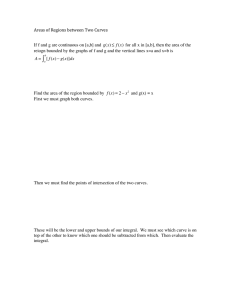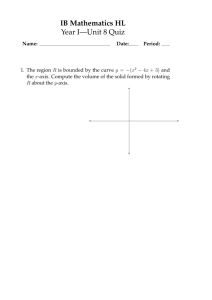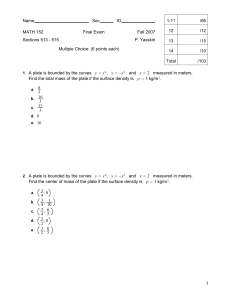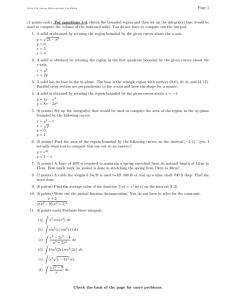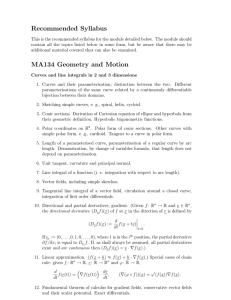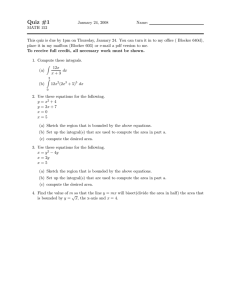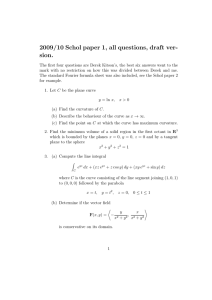Math 52 - Fall 2007 - Midterm I
advertisement
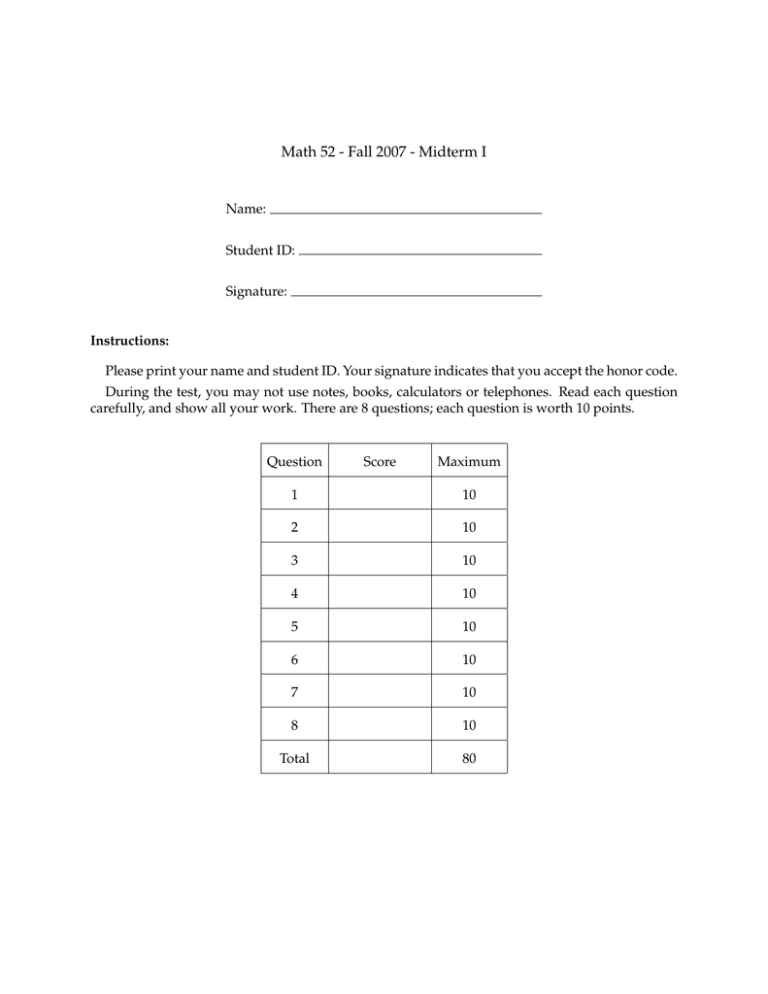
Math 52 - Fall 2007 - Midterm I Name: Student ID: Signature: Instructions: Please print your name and student ID. Your signature indicates that you accept the honor code. During the test, you may not use notes, books, calculators or telephones. Read each question carefully, and show all your work. There are 8 questions; each question is worth 10 points. Question Score Maximum 1 10 2 10 3 10 4 10 5 10 6 10 7 10 8 10 Total 80 Problem 1. Change the order of integration and evaluate Z 1Z 1 cos(y 3 ) dy dx. √ 0 x Problem 2. Find the area of the region between by the curves xy = 1, y = x2 and y 2 = 8x. Problem 3. Compute ZZ x+y dx dy, (x − y + 1)2 D where D is the triangle with vertices (0, 0), ( 12 , 12 ) and (1, 0). Problem 4. Consider a plate bounded by the curves xy = 1, xy = 2, xy 2 = 1 and xy 2 = 4, and assume that the density function is δ(x, y) = y. Find the first coordinate x̄ of the center of mass. Problem 5. Find the polar moment of inertia of a plate bounded by the lines x = 1, x = 2, y = 0 and y = x, assuming that the density function is 5 δ = (x2 + y 2 )− 2 . You may want to use polar coordinates. Problem 6. Consider the field F = (x + y) i + 4y j. Compute the integral Z F · ds, C taking the curve C to be (i) the line segment starting at (1, 1) and ending at (−1, 0); (ii) the arc of the parabola 2y 2 = x + 1 starting at (1, 1) and ending at (−1, 0). Is the field F a gradient field? Problem 7. (i) Consider the field F = i − j. How should you place a unit line segment C so that Z F · ds = 1? C (ii) Consider the field F = ∇f , where f (x, y) = x2 y − xy 3 + y 2 . Let C be any curve starting at (1, 1) and ending somewhere on the x-axis. Show that the line integral Z F · ds C is independent of the path C, and compute its value. Problem 8. Let f (x) and g(y) be two continuously differentiable functions defined everywhere on the real line. Consider the field F = (f (x) + y 2 ) i + (g(y) + xy) j. (i) Starting from the definitions, show that Z F · ds = 0, C where C is the square of side 1 with corners at (−1, −1), (1, −1), (1, 1) and (−1, 1). (ii) Can it possibly be true that Z F · ds = 0 C for any simple closed curve C? Please justify your answer.
